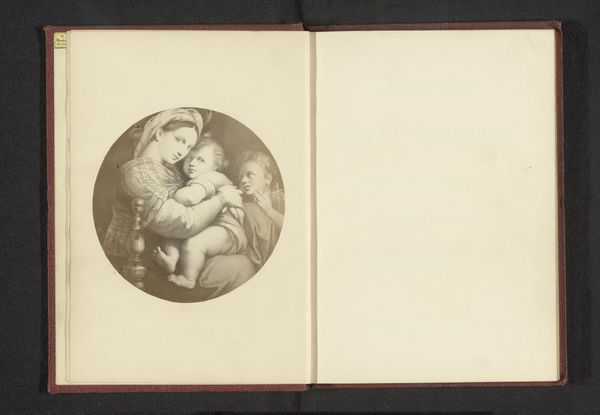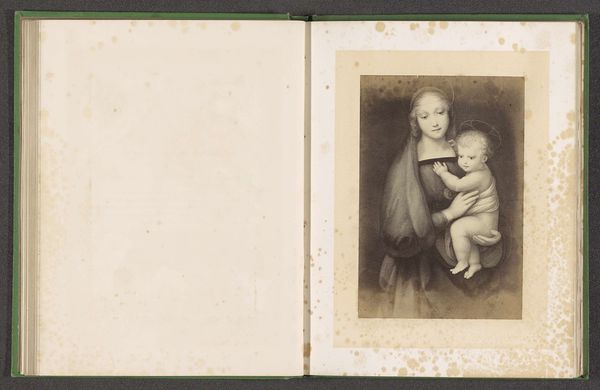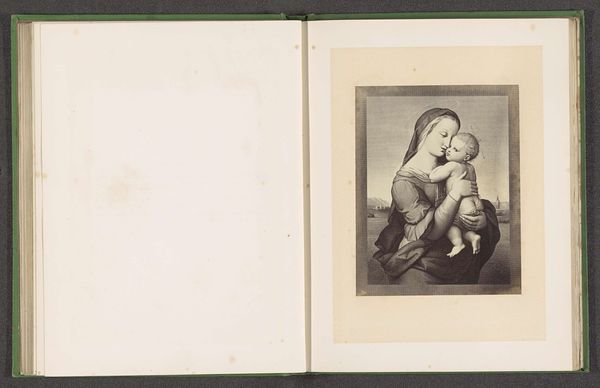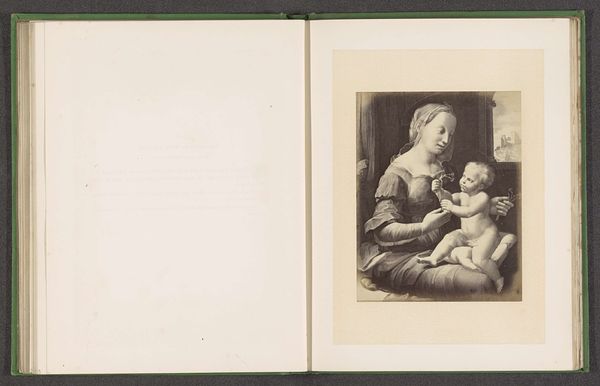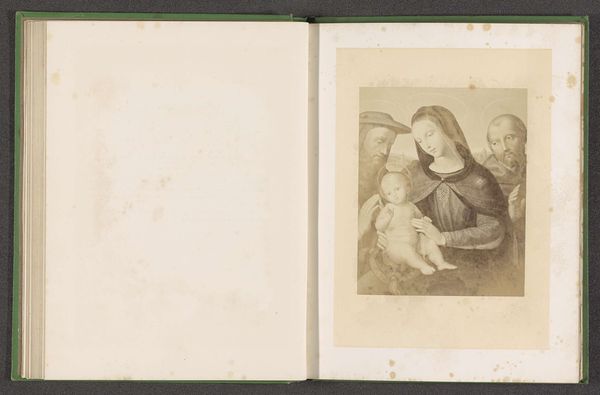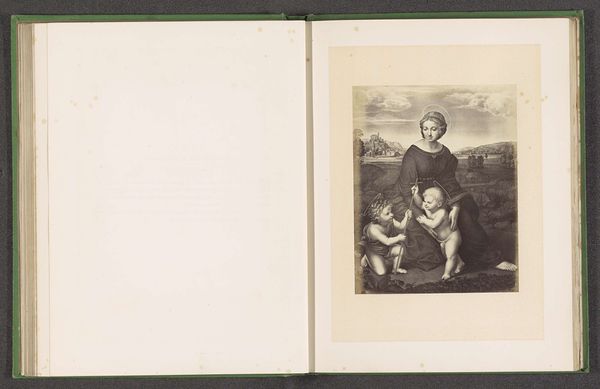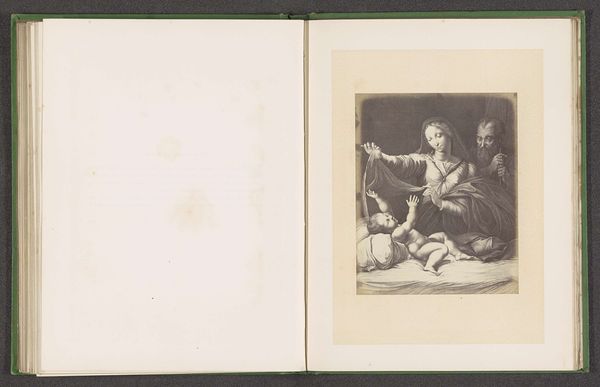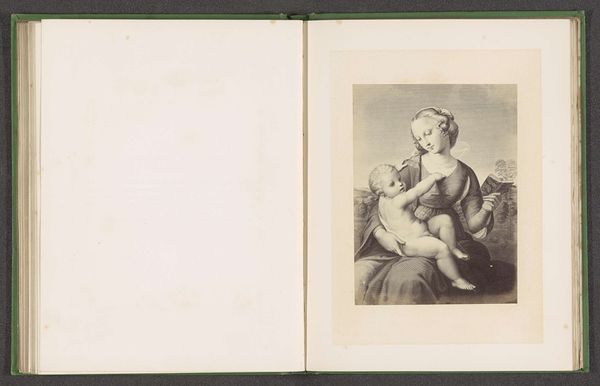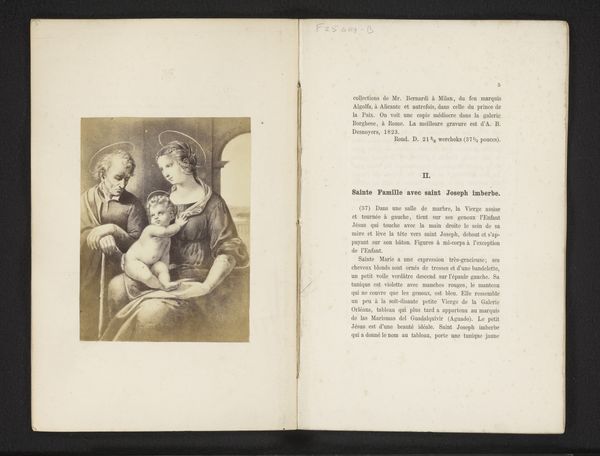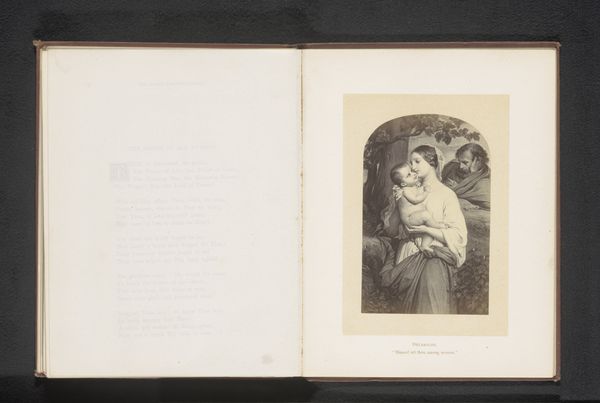
Fotoreproductie van een prent door François Forster van de Madonna della Rosa door Rafaël before 1869
0:00
0:00
print, photography, gelatin-silver-print
#
portrait
# print
#
11_renaissance
#
photography
#
gelatin-silver-print
#
italian-renaissance
Dimensions: height 169 mm, width 128 mm
Copyright: Rijks Museum: Open Domain
Curator: It strikes me as intensely classical, almost serene in its arrangement, yet there's a fragility suggested by the medium. Editor: Indeed. What we have here is a gelatin-silver print, a photographic reproduction dating to before 1869, of a print made by François Forster. Forster’s print, in turn, reproduces Raphael’s Madonna della Rosa. So, it's a copy of a copy—multiple layers of remove from the original. Curator: The layering creates an echo chamber of artistic and spiritual intention. I wonder how this cascade of reproduction affects the aura of the original Madonna and Child theme. Does it amplify or diminish the potent symbolism of divine motherhood? Editor: The layering adds significant social context. Consider the role of photographic reproductions in democratizing access to iconic Renaissance paintings in the 19th century. Suddenly, art usually reserved for elites becomes widely available. Curator: And that act of distribution reshapes our collective understanding of what these figures mean. This isn't merely a holy scene; it's an icon reproduced and reimagined for mass consumption. The photograph, as a mass medium, gives the Madonna a new type of presence. Editor: Precisely. The softness of the gelatin-silver print lends the scene a gentleness, even a sentimental air, which might contrast with the original's more formal Renaissance presentation. Curator: And there's something psychologically intriguing in the fact that this image has been copied and revered across generations. It shows an enduring human need for the archetypal mother figure, constantly reinvented across cultures and art forms. The symbols persist, even as mediums shift. Editor: A point well taken. This copy, born out of photographic techniques, speaks to broader changes in art consumption and artistic accessibility in the 19th century. The proliferation of images deeply impacts society and art itself. Curator: Looking at it again, I can’t help but consider the ripple effect of meaning initiated by the first artist. Even now, mediated by reproduction, its resonance lingers. Editor: Yes. It reminds us of the powerful—sometimes transformative—role art plays when it becomes a shared cultural asset, rather than just the possession of the elite.
Comments
No comments
Be the first to comment and join the conversation on the ultimate creative platform.

